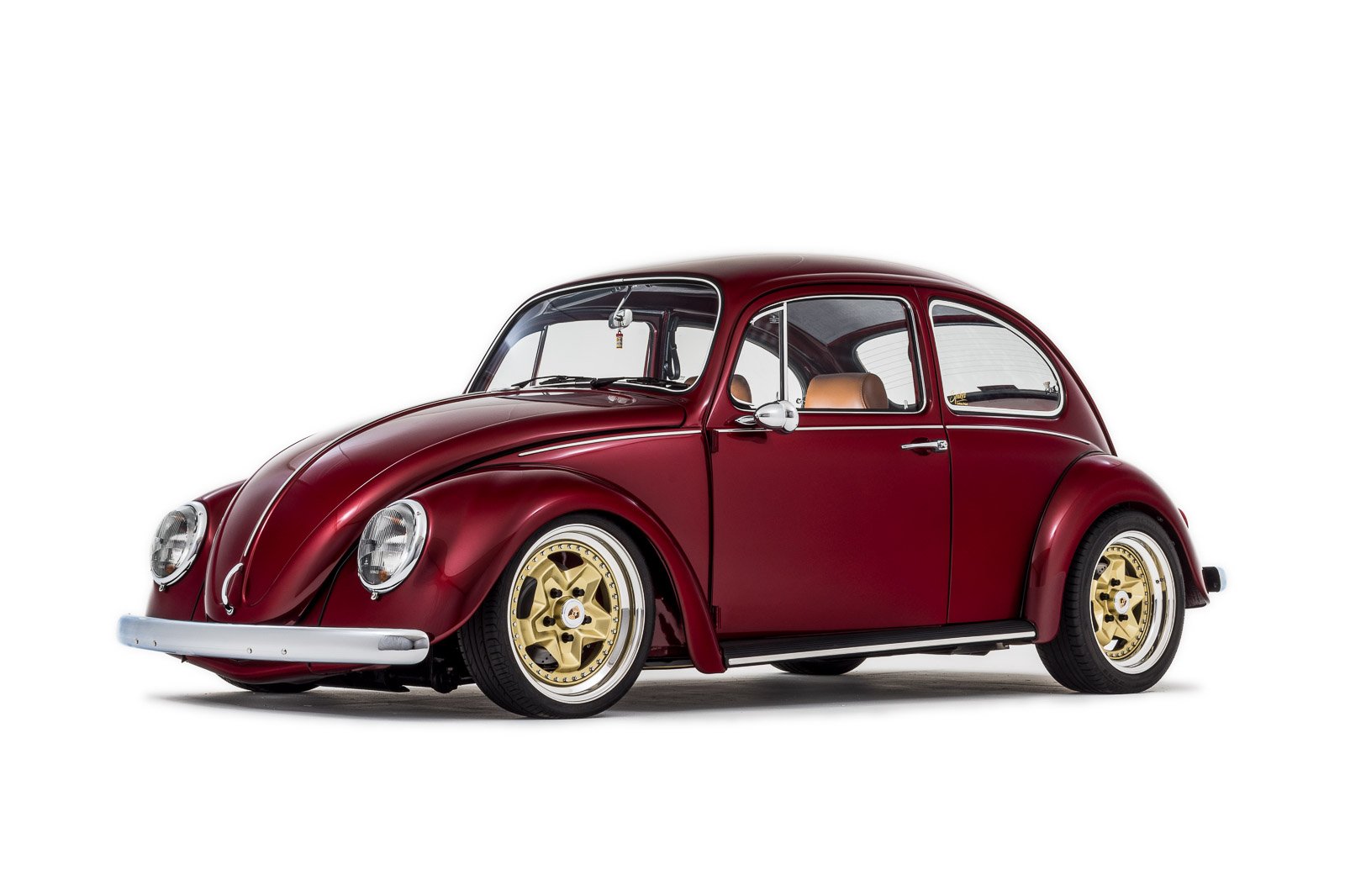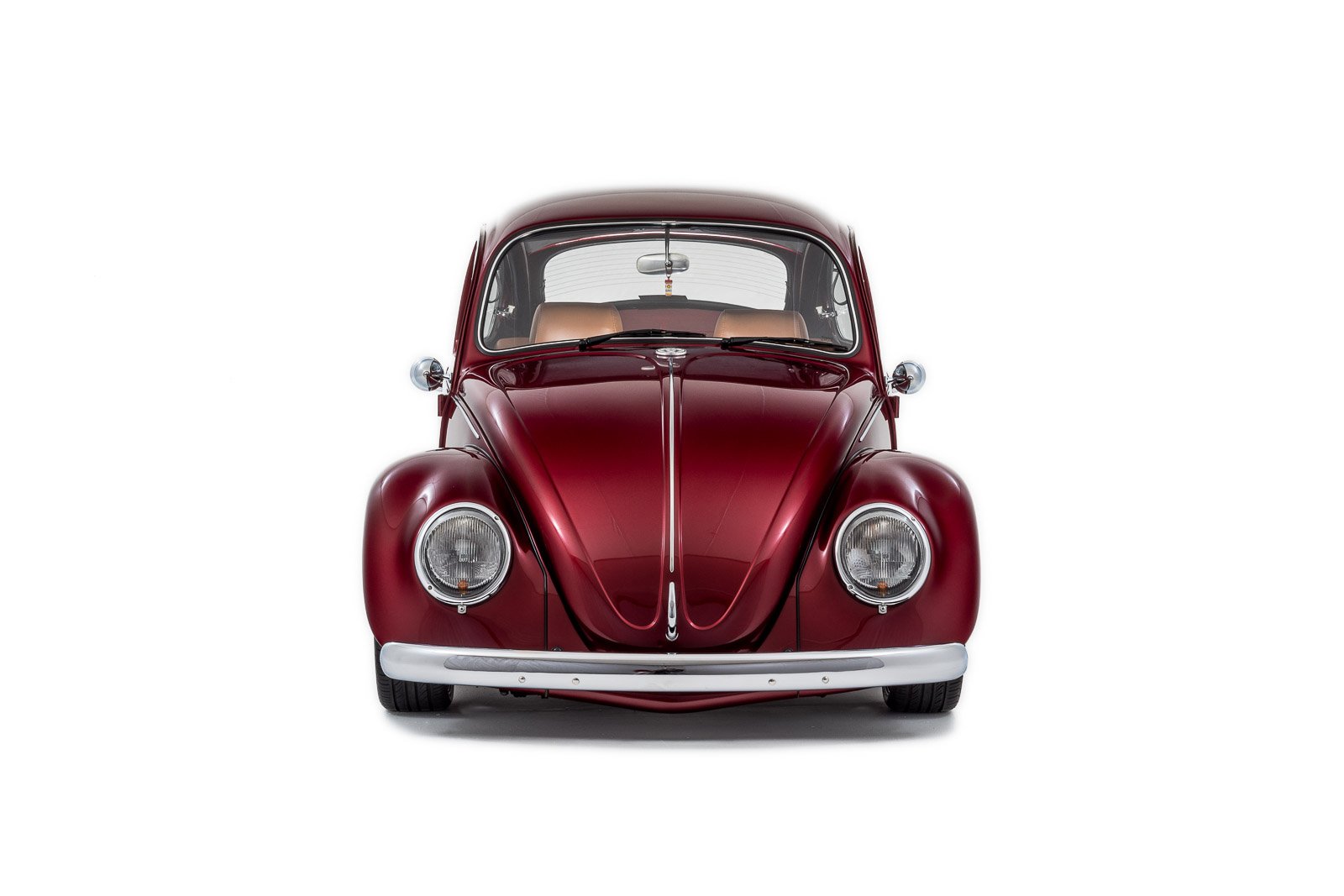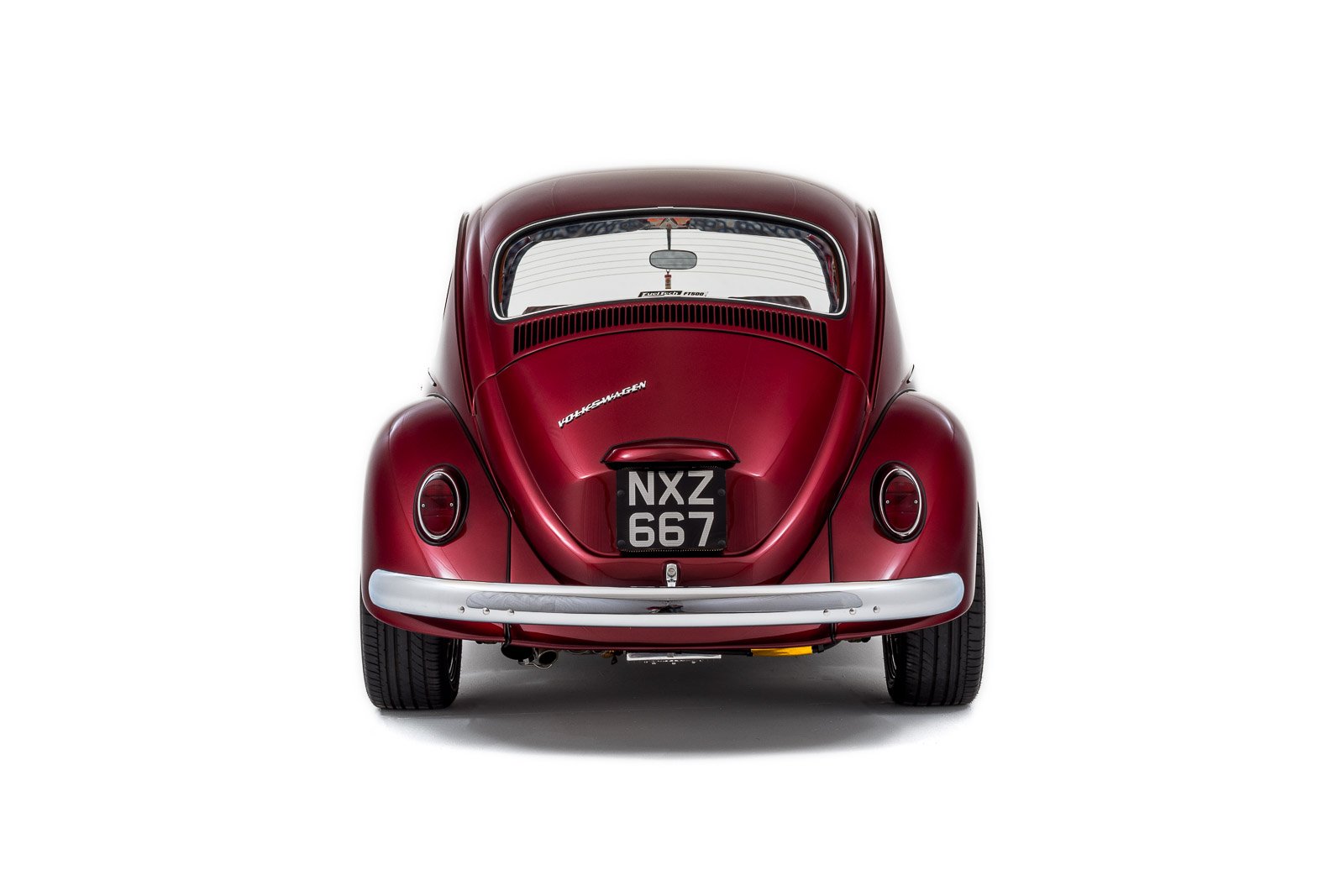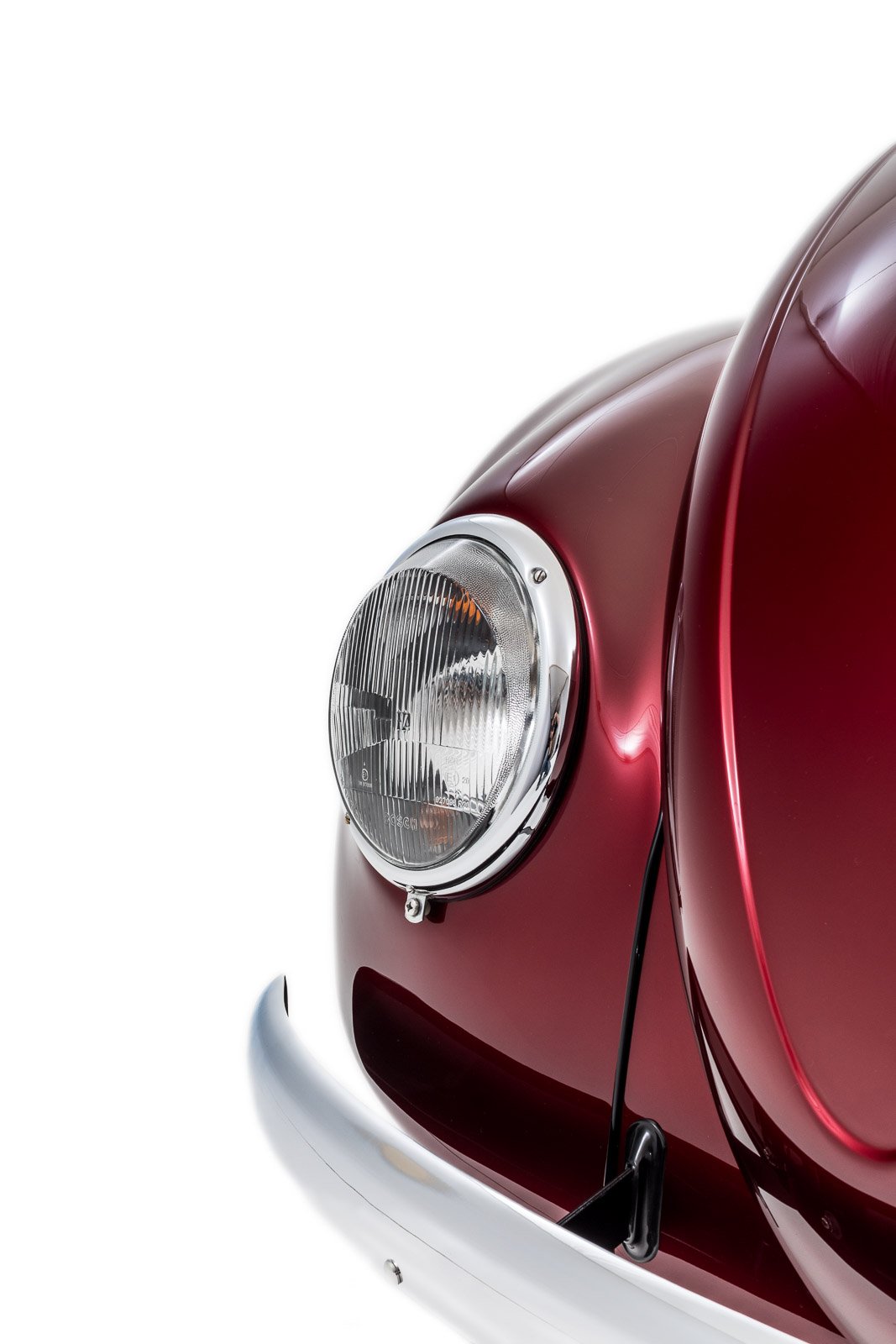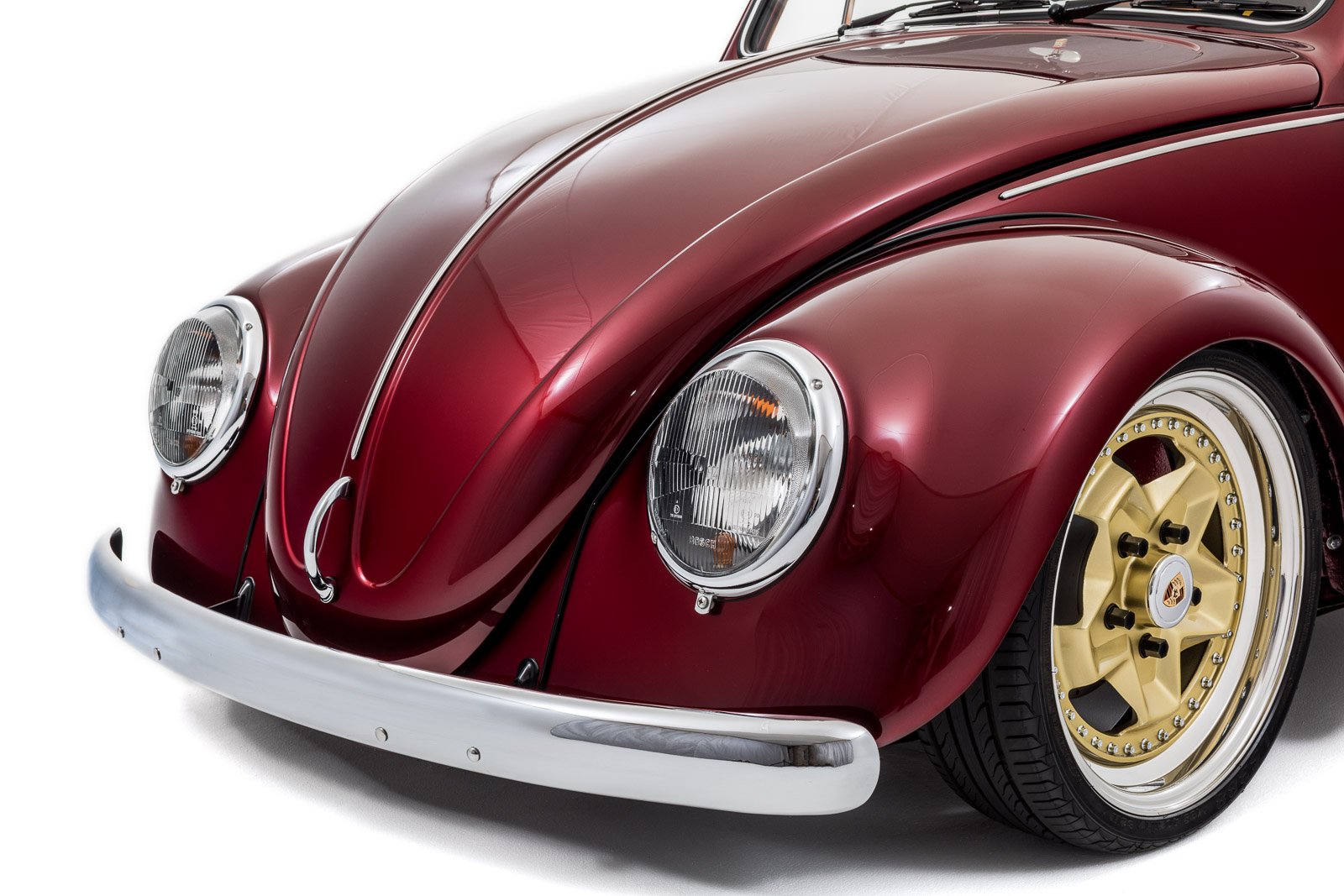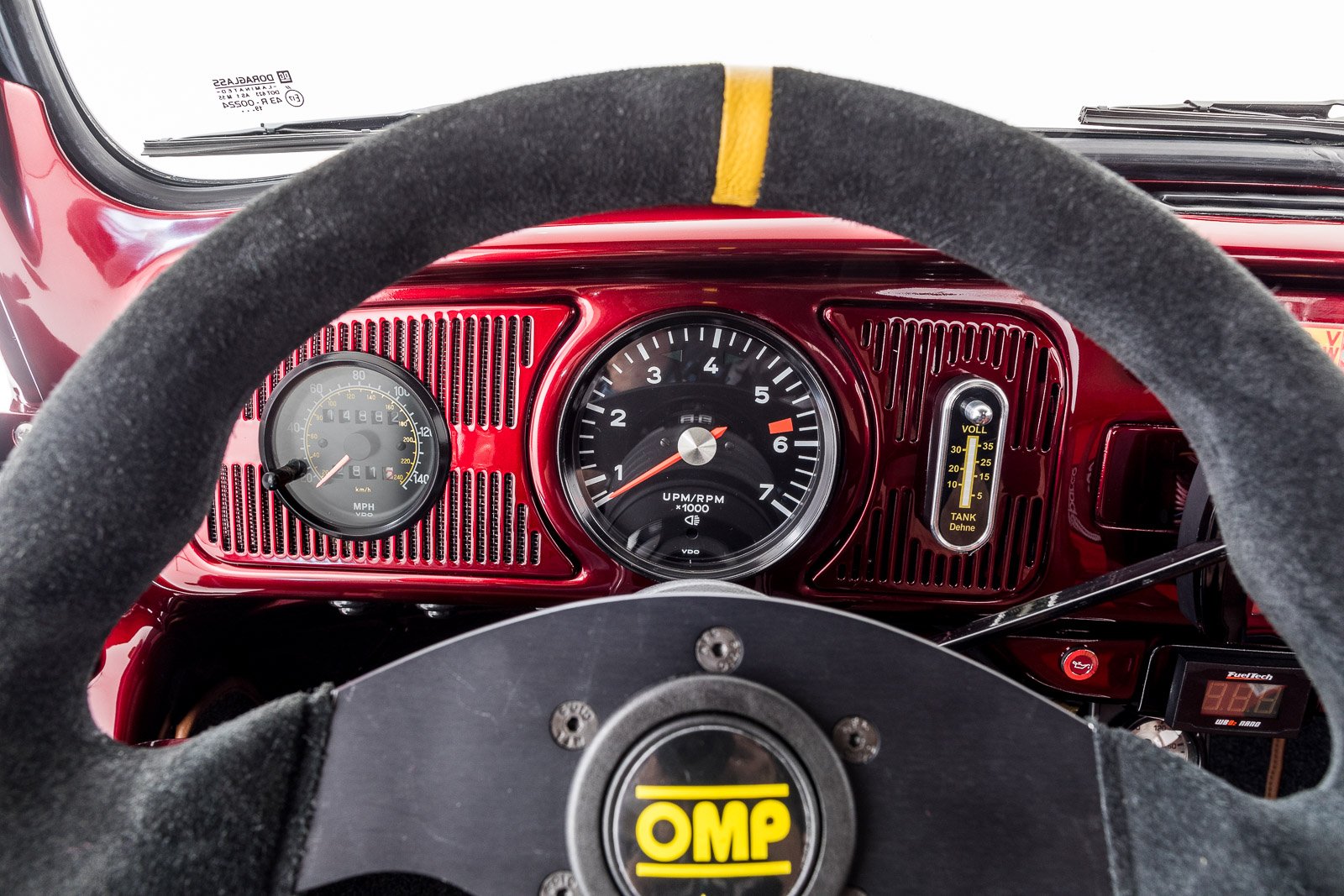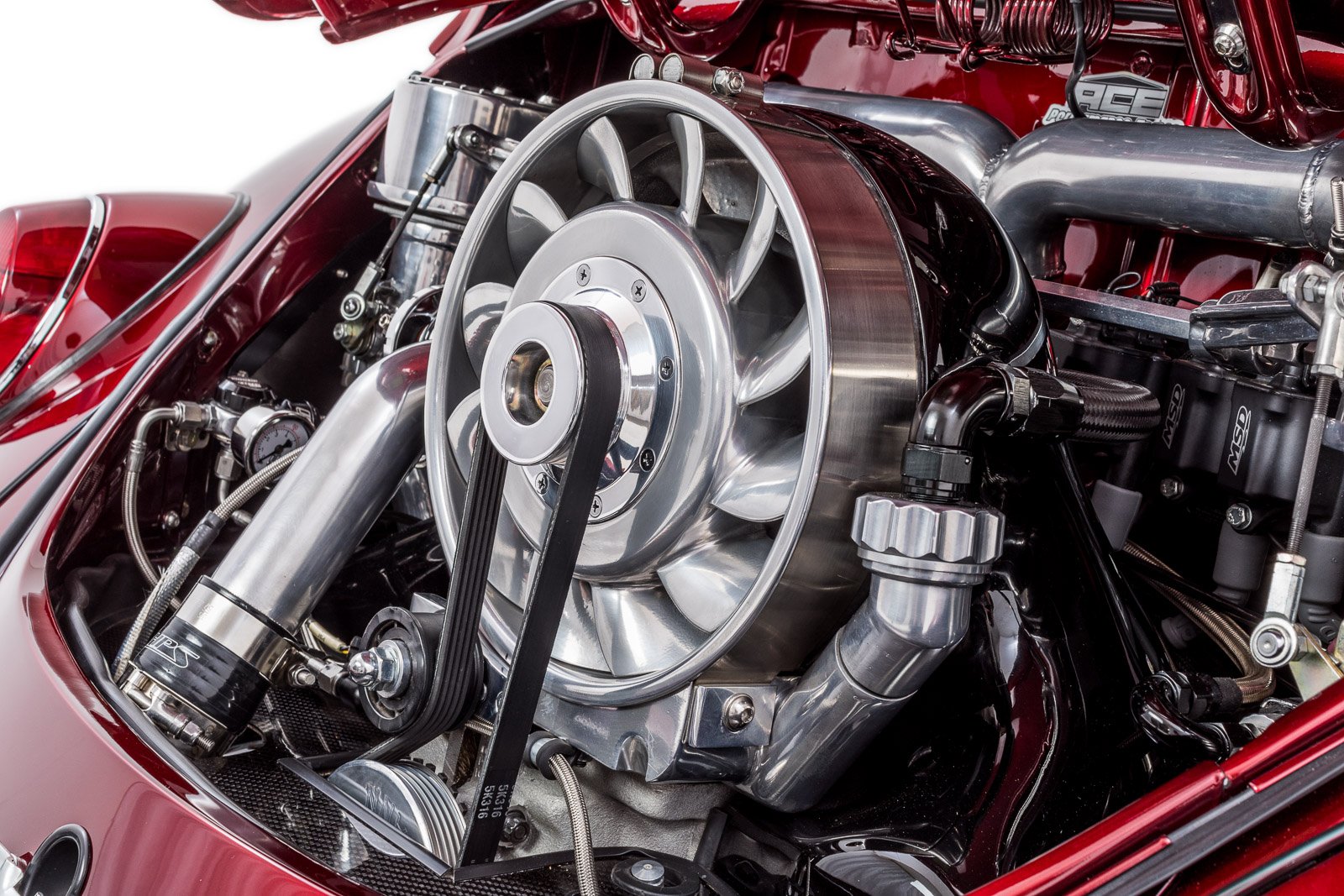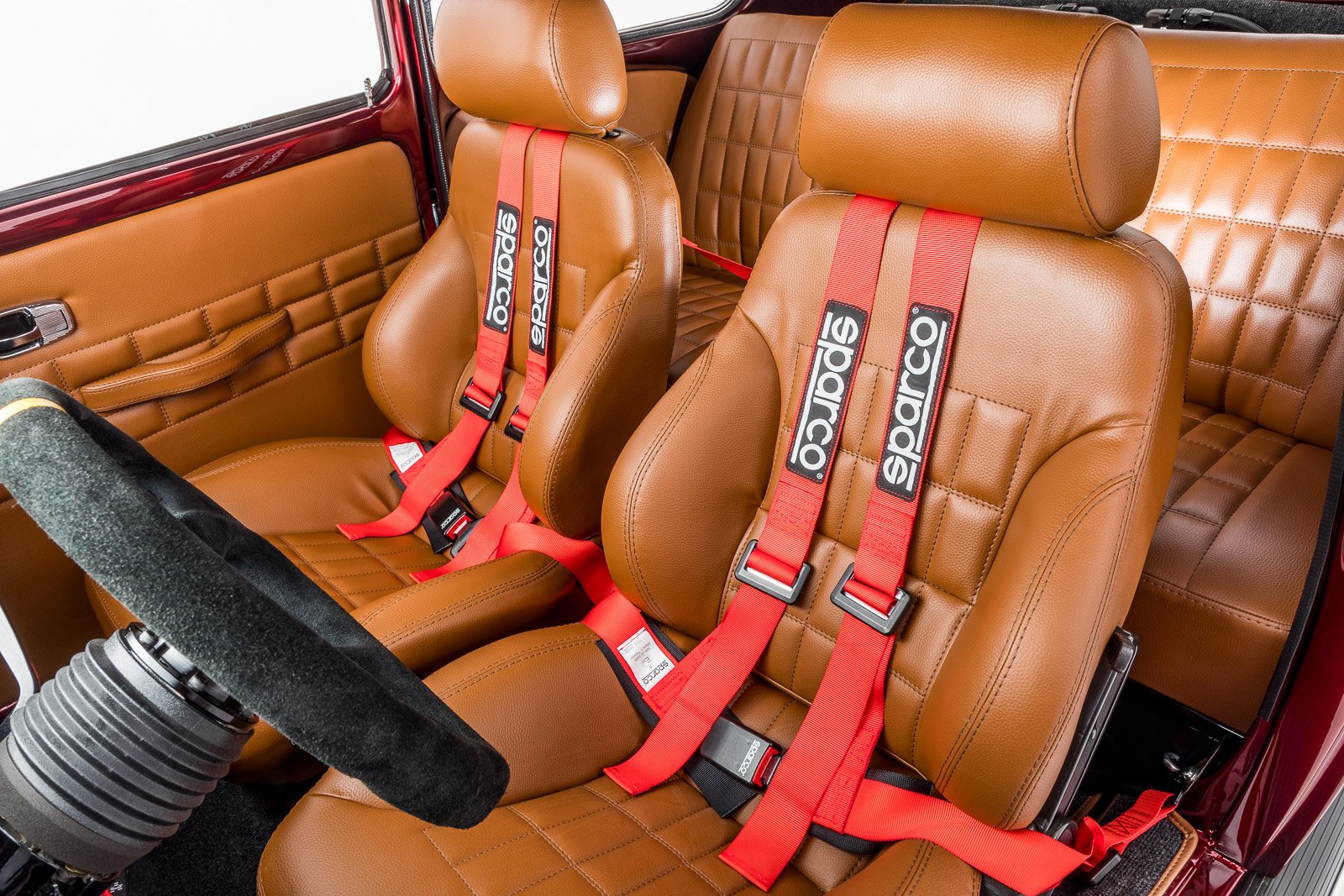“Cookie Monster” 1967 Volkswagen Beetle
When Tony Nixey bought a former VolksWorld feature car in 1994 to go racing, he had no idea where that journey would take him
Words: Tony Nixey
Photos: Si Gray / Volksworld
I started attending VW events with friends in the late ’80s and bought my first VW – a ’72 1200 – in 1991. I built a 1641cc motor, welded adjusters into the front beam and fitted a set of Center Line replicas, but it wasn’t long before I felt the need for more speed, so stepped up to a hot, twin carb, 2180cc motor. These days everyone seems to run a 2.0-litre plus motor, but in the early ’90s a stroker motor in a street-driven Beetle in the UK was quite something.
I spent many weekends at Santa Pod and even won a few RWYB events, including the Fast Car Challenge two years in a row. For me, it was all about driving the car to the track, beating a few dedicated drag cars, and then driving home at the end of the day.
Then, in 1994, I spotted a stunning yellow ’67 on polished Porsche cookie cutters for sale. It had recently been featured in VolksWorld and had a full Scat Pro-Car interior. More important to me, it had recently been kitted out with a John Maher Racing-built close ratio gearbox and four-wheel disc brakes, which suited my plans for a more serious street ’n’ strip car to a tee.
Keen to get thing moving, my next stop was Stateside Tuning where James Calvert agreed to build me a 2276cc motor with Street Eliminator heads and Engle FK87 cam. I went on to race and show the car at practically every event on the calendar over the next couple of years, picking up several trophies along the way.
But in 1996 an opportunity came my way to work overseas for a few years, so I cleared a space in my late father’s barn, raised the car on axle stands, covered it up and waved goodbye.
Dad always joked that I would never come home and ‘get that old banger back on the road’ and, 20 years later, it was looking like he might have been right. So, in 2016, I pulled the cover off, changed the fuel lines and brake hoses and fitted an IDA-equipped 2332cc motor, which I’d bought from Keith Seume.
Rolling into VW Action that year in a car I had bought 22 years earlier, having been out of the UK for 20 years, was a surreal experience, and one I will never forget.
The car looked great and pulled like a train, but two decades in storage had resulted in some rust issues in the heater channels and inner wings so, in May 2018, the car was dropped off to Andy Finch at Spikes Vintage Restorations for a revamp. Andy and I talked things over and put together a plan to take the car to the next level… and then some.
The first step was to have the body acid dipped and, when Andy rang to let me know it was time to discuss the metalwork options, I was expecting the worst. Some might have walked away at that point, but I had an emotional attachment to the old car and so instructed Andy to go ahead with the necessary repairs. As I was still stationed overseas at the time, I agreed to have Andy project manage every aspect of the overhaul.
The first thing he did then was to hand the car to John Brewster of JB’s Elite Fabrications, where both heater channels were replaced, along with the rear quarter panels, lower a-pillars, firewall and boot floor. NOS ’67 front and rear valances were located, and John expertly modified the rear to be removable to make engine fitting easier.
Finding a good pair of ’67-only doors proved a bigger challenge than expected, so Andy suggested using a pair of NOS 1974 doors and having John graft in the door handle recesses and fittings from the original ’67 panels. He also modified the door inners to work with the ’67 winder mechanisms and blanked off the mirror mount holes. John’s attention to detail is evident everywhere, but no more so than in the perfect door gaps and body shuts.
Andy was constantly quizzing me on my choice of colour, and I was adamant to begin with that it should stay in its original theme of a shade of yellow or gold. I was shown a gold that looked absolutely amazing… for a full-on show car, but I wanted something I could live with on a day-to-day basis. I've always loved hot rods and candy paints and remembered seeing a candy apple red car on gold EMPI five spokes in the ’90s. As that was a car I’d never forgotten, we decided to go with a red and gold theme.
Spike and his team smoothed and flatted the body to perfection before laying on the epoxy sealer, custom basecoat and then the House of Kolor Kandy Apple Red, with lashings of clear over the top, colour sanded to bring out that famous mile deep shine. When Spike called me to say it was ready for me to see, I wasn’t expecting the body to be fully assembled with all the glass and trim. I was blown away.
After that, the car’s floorpan left the country. Marco De Waal in Holland knows exactly what it takes to set up a well-sorted chassis, so stripped the ’pan before blasting and spraying it – including the original floorpans – in gloss black. Marco installed a Dogback single bag front air beam, along with dropped spindles, front disc brakes and Wilwood calipers. The rear suspension consists of Ron Lummus adjustable spring plates, bronze-bushed spring plate retainers, limiting straps and a CSP disc brake conversion. The Koni red shocks that were on the car were retained at the rear and a new matching pair purchased for the front, all given a coat of gold paint by Marco.
Marco also installed the new gearbox using solid mounts, a custom solid centre mount and a CSP torque bar.
I had always planned to rebuild the 2332cc motor myself during a return visit to the UK, but work commitments resulted in the cancellation of that trip, and a new plan, this time involving Stefan Rossi at ACE Racing Engines. This was right around the time Stef relocated his business from the Midlands to Torrance, California, meaning all the shiny new parts I’d ordered from the USA ended up being shipped back across the pond to be assembled at his new workshop.
The Gene Berg wedgemated 84mm crank / flywheel and Carrillo rods from the old 2332cc IDA motor were re-used in a fresh 2332 build, this time with fuel injection and a turbocharger, which Stef assured me would be good for 300+bhp.
Fuel and ignition are controlled by a FuelTech FT500 ECU, which also serves as the dash display showing rpm, oil pressure, fuel pressure, oil temperature, air / fuel ratio, boost pressure, timing and even works as a shift light. It can also hold a number of different engine tunes, which can be switched on the fly if I feel like a step up – never down! – in power.
Shifting the all-Weddle gear set is the Scat Dragfast shifter that was in the car before, now with a two-step activation button cleverly been hidden inside the T-handle.
Stephen Thirkettle at 13 Stitches was responsible for the car’s interior. I wanted to re-use the Scat Pro-Car seats as they are super comfortable, so Stephen took these and re-trimmed them in a beige vinyl with a biscuit design, doing the original rear seat and door cards to match. A new grey carpet was also made and expertly installed over a layer of Dynamat sound deadening.
I wanted as much of the Kandy paint to show on the interior as possible, so the headliner grip channel was removed from the b-pillars and a simple 1200-style headlining made up in grey Alcantara.
I added three-point harnesses and a new OMP steering wheel to complete the inside overhaul.
Again, as I wanted to retain some of the car’s previous flavour, I insisted on keeping the Porsche cookie cutter. However, instead of just detailing them, they were sent to Matthias Krenzer in Germany who machined the centres out of the original 15-inch rims and mated them to some 17-inch aluminium bands, all held together using BBS split rim bolts. To get the perfect fitment, I chose to alter the width, as well as the diameter, so they’re now 7 x 17s out back and 5.5 x 17s up front, with 205/50-17 and 185/40-17 tyres respectively. I'm a huge fan of a deep dish rear wheel on a Bug, and I just love the way the rears look now.
With the finish line in sight, a decision was made in December 2019 to enter the car for the 2020 VolksWorld Show, but there was still so much to do. I hadn't received the engine from Stef in California at that point and was beginning to stress that we weren't going to get finished in time.
The finished body was transported over to Marco’s in Holland and I eagerly followed the next weekend, and was delighted to find the engine had just been delivered, too. It was all coming together, so I spent the weekend with Marco installing the engine and fuel lines and plumbing in the twin Cagero oil coolers that are mounted to the rear torsion bar tubes.
Marco and Raimond Verlaan then spent the following week installing the FuelTech dash display and the dedicated engine wiring harness, alongside the previously installed body wiring harness, which had been supplied and installed by Iain Burns at AirCooled Auto Elec.
Two weeks later, I was back in Holland for the wedding… of the body and ’pan. This was the first time I saw my dream becoming reality, with the gold wheels and Kandy paint shining under Marco’s workshop lights. I was truly in heaven.
A few weeks later, I returned to Holland again to help with some of the final details and to be there for the first fire up of the new motor. When I told Raimond to ‘Hit it’, the engine fired straight up, the open header from the turbo barking in Marco’s workshop. That was a pretty emotional moment for all of us present and I thought back to my dad’s words about never getting the car back on the road, hoping he was proud of what we had achieved.
The car was rushed back to the UK as we were now only a few weeks away from The VOWO Show. Spike’s team installed the fresh interior and Stephen finished up with the carpets. With a final tweak on the ride height to get just a shade of negative camber on the rear, we were show ready… Well, until Covid ruined the plan.
I was truly gutted, as the hard graft carried out by everyone involved, pushing their limits to get the car done, suddenly became insignificant. It was a massive let down at what should have been the best point in the project. Dejected, I spoke with Spike and arranged to have the car transported back to my workshop.
In truth, while the car was indeed ‘show ready’, it wasn’t 100% finished, so 2020 became the year I got the car road ready and running great. To say I was nervous when the big day for the first drive arrived in April would be an understatement, but that soon turned to elation as I increased the engine rpm and the boost of that big Garrett turbo started to come in. Wow! What a rush.
So, how does she drive? Well, first of all let me stress this is a street-driven show car, it doesn't get trailered anywhere. I also use it at weekends for the occasional adrenaline rush and can honestly say she is fantastic, and drives lovely. Thanks to Marco’s chassis set up, I can let go of the wheel at speed and she tracks straight as an arrow.
I've owned and driven big capacity, IDA-powered VWs in the past, but this feels entirely different with the turbo. It’s seriously quick, and pulls through the stock gear ratios like it’s a close ratio ’box.
On top of that, the paint glistens, falling from highs to lows as the sun passes over the curves of the body, and the combination with the gold is just perfect in my eyes.
As many people seemed to want to know what it would do on the quarter mile, at Bug Jam ’22 I put it to the test. The lights go green and I'm in no rush to get off the line as I knew it would just spin the tyres. But once rolling, I'm on it, foot buried to the floor and pumping with adrenalin. It was all over pretty quick, but I'm suddenly taken back to 1996 when I last blasted the car up the track at Santa Pod.
So, her time for all to see… 12.8 second at 102mph. Best of all though, I drove it there, raced it, showed it, won a trophy and then drove it home. In my opinion, that is the true spirit of owning a fast road VW.
This car will be with me forever and will continue to evolve over the years ahead. This winter I’ll change the old Scat shifter for something higher and closer to the steering wheel, and the engine is coming out for a winter check over and freshen up as needed. I’ve got water / methanol injection to go on it to help push the inlet charge temperature down a little in search of some ‘free’ power, and it could definitely do with some stickier tyres. I might modify the exhaust a bit too, just to make it a little quieter. Other than that, I just intend to drive it.
Thanks: Andy 'Spike' Finch for managing the restoration and working with me to fulfil my dream; all at Spikes Vintage Restorations for the truly awesome paint and body assembly; John Brewster for his expert metalwork, attention to detail and advice; Marco de Waal for the first class work on the ’pan, fitting the body and being by my side when we started the motor; Raimond Verlaan for installing the engine harness and ancillaries; Stefan Rossi for such an awesome engine and support in developing it further; Matthias Krenzer for his amazing work on the rims; Michael Moos for the superb Dogback beam; Stephen Thirkettle at 13 Stitches for his stunning work on the interior; Iain Burns for the supply and fitment of the wiring harness; Mark Way for his support and for getting the engine over to Holland; my lovely wife, Nong, who supported me throughout this project; and finally, my late father who gave me so much inspiration, and for setting me the challenge to ‘get that old banger back on the road.’ Miss you dad.


